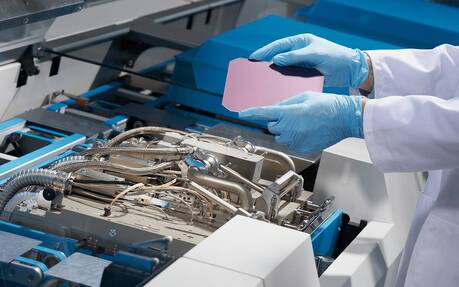European Breakthrough Has Scientists Talking About 2,000 km of Range
Forget about Samsung and SK Innovation with their proposed batteries supplying 800 kilometres of range.
A new battery cell manufacturing technology developed by German and Dutch scientists apparently has the potential to make electric vehicles travel up to 2,000 kilometres with a full charge.
- Also: Battery Providing 800 Km of Range in 20 Minutes Might Come Soon
- Also: Tesla Wants to Cut Battery Costs in Half
Instead of inventing new cell chemistry, Fraunhofer (Germany) partnered with SoLayTec and TNO (Netherlands) to work on a patented nanocoating process called Spatial Atom Layer Deposition (SALD).
Basically, it involves applying coatings on an industrial scale that are as thin as a single atom. As the research team points out, the material utilisation is significantly increased since the electro-chemical reaction in batteries usually only takes place on the surface. The SALD process would significantly increase the surface of electrodes and their capacity to store energy.
Electric vehicles equipped with this type of battery would not only provide three times the range of today’s EV leaders, but also have the ability to charge five times faster.
“As a result, an electric car will be able to drive well over 1,000 kilometres with smaller batteries or even over 2,000 kilometres with larger battery packs in the future without recharging,” says Frank Verhage, CEO of SALD B.V., the company that wants to produce and market the technology.
“This is not a theoretical range record, but rather the worst-case scenario: even with sporty, dynamic driving and air conditioning or heating, such a vehicle should have a residual charge of 20 to 30 percent.”
Verhage says his team’s efforts to fundamentally enhance battery cells by improving the ion flow between cathode and anode are similar to the breakthrough advances promised by Tesla during its Battery Day in September.
The technology could land in electric cars in 2022 or 2023 at the earliest. SALD B.V. is already in talks with automakers but does not want to identify which ones.
